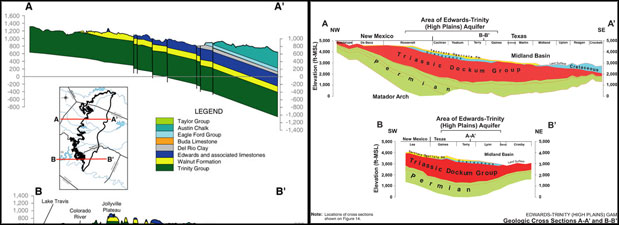Water-Earth Dynamics, Challenge 3: Knowing What We've Got Before It's Gone
Groundwater is the largest source of available freshwater. It exists within tiny pore spaces in rocks and sediments, and in larger spaces, such as fractures, within rocks. Groundwater and surface flow interact.
An aquifer is an underground layer of rock or unconsolidated materials in which groundwater is stored. One of the largest aquifers in the world, the Ogallala Aquifer, is a major aquifer for the Texas Panhandle. The Ogallala Aquifer supplies 82 percent of the water used for irrigation in Texas. The Edwards (Balcones Fault Zone) Aquifer is a major aquifer for the south central part of the state. Contamination and overuse of our aquifers is an ongoing concern for many cities and rural areas. The hydrogeology of the Ogallala and the Edwards aquifers is not the same, requiring different approaches to water management.
You are part of a team of four young filmmakers who are participating in the annual Austin School of Film/SXSW Film 24-hour film competition. You have only 24 hours to script, shoot, and edit a 15-minute short film according to a set of guidelines. This year, the genre is documentary films and the topic, "Texas Groundwater — Knowing What We’ve Got Before It’s Gone". Your challenge is to create an educational video that compares the Ogallala Aquifer with the Edwards (Balcones Fault Zone) Aquifer, in terms of (1) geology and hydrologic regime (flow, recharge and discharge, depletion rates, groundwater surface flow interactions, and water quality); (2) illustrates how these factors influence the aquifers susceptibility to contamination and groundwater withdrawal; and (3) provides information about the monitoring systems in place for each aquifer, as well as remediation policies, and the future of each aquifer.
You may include animations, cartoons, interviews with experts, as well as landscape film footage in your film.
